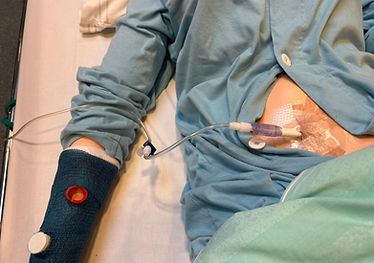
ReLink Drain
Reducing catheter dislodgement in nephrostomy drainage
ReLink Drain

Up to 37% of nephrostomy drainage catheters, crucial for renal care, are accidentally dislodged during use.(1) Dislodgements pose serious patient safety issues, and in addition, may lead to complications such as emergency room visits and repeat hospitalisations. These occurrences can result in bed/bedside soiling, infection, bleeding, and the risk of exposure to bodily fluids.(2) and (3)
Besides the significant patient safety concerns, each dislodgement incident can lead to up to €10,000 in costs for replacement procedures and additional nursing time.
ReLink Drain is a breakaway connector with double-sided, self-sealable valves, designed to disconnect under excessive force, thus protecting the nephrostomy drainage catheter placement site.
After separation, both parts can be disinfected and reconnected to rapidly restart the nephrostomy drainage.
ReLink Drain reduces accidental nephrostomy catheter dislodgement and minimises spillage of fluids.

Benefits
-
Reduces catheter dislodgement frequency
-
Minimises expensive replacement
-
Reduces spillage of bodily fluids
-
Easily reconnectable, saving nursing time
-
Reduces plastic waste by minimising device replacements

Download
References
-
Dablan, Ali et al. “Predictors of Nephrostomy Catheter Dislodgement: Insights from a Retrospective Analysis.” Cardiovascular and interventional radiology vol. 48,5 (2025): 633-642.
-
https://www.emdocs.net/complications-of-nephrostomy-tubes-ed-presentations-evaluation-and-management
-
Ütebey, Ayşe Rüksan et al. “Predictive factors for spontaneous dislodgement of percutaneous nephrostomies for malignant ureteral obstruction.” Abdominal radiology (New York) vol. 50,9 (2025): 4268-4282.

